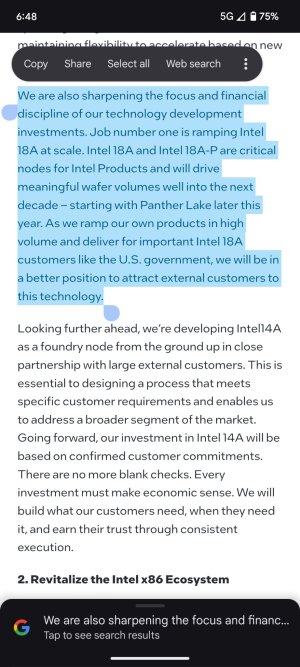No they didn't. But they weren't going to enter mobile except from a position that reinforced their core business. That's what incumbents do and that's why they get their ass handed to them. Microsoft built mobile off of Windows and Intel built mobile off of x86, both were terrible ideas because neither was interested in making a great mobile product, but in making sure mobile didn't hurt the thing they were most reliant on.
I'll tell you why they got blindsided.
My first Windows computer was Windows 95 with Plus! extension. It had a feature that could have been a predecessor to current mobile OSes.
It was called something like Internet feature. When you enabled that, the icons went from double clicking to open it to single click.
Apple basically pioneered the Icons, but who popularized it? Microsoft, with Windows. And it's ironic that Microsoft went against that altogether and went with the wildly space inefficient Tiles while Android/iOS continued on the tradition and used Icons.
There's no real GUI difference between Android/iOS and Windows 7 except the start menu!
Windows 8 could have been Icon focused OS just like the mobile competitors, and wouldn't have needed a skin on top of it for the useless tiles, while keeping Start Menu for everyone else.
Intel needed to break with x86 way back when Apple wanted them to make iPhone processors and they couldn't do it. Microsoft couldn't not shove Windows into PDAs and Phones. They weren't blindsided - they saw the market, they just blew it because they were cowards.
They didn't need to break from x86 either. Medfield showed that it can be very efficient.
The biggest issue is not pivoting to such a big advancement earlier, because they were so narrow-minded in offering for inefficient platform such as PCs.
Medfield was introduced in 2012. Atom was available in 2008 to the utter fail called MIDs or Mobile Internet Devices. Medfield uses the same In order architecture as the 2009's Bonnell Atom. Remember that they claimed 2010's Moorestown would have been enough for mobile, but the truth was it wasn't. Because they weren't ready. Let's say if the integration and power management on Medfield was truly ready in 2010 with Moorestown? I bet you Intel would be a player in the phone space today.
As a premier merchant vendor of CPUs across computers, and by the spirit of Moore's Law, it's natural to expect cheaper CPUs(Celeron, which was a reaction to Cyrix) and lower power computers over time. Intel resisted this. This the result, thus the haphazard reaction of contra revenue.
Tiles is also a haphazard reaction to being blindsided, except on MS's side. Windows 8/8.1/10's "mobile" button is nothing but a skin on top of it. It loads another thing on top of the existing ones! It didn't need to!





